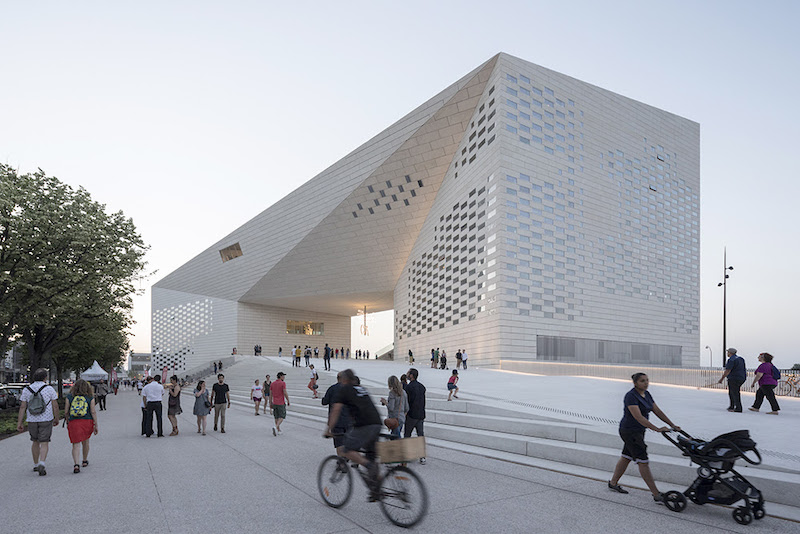The new 18,000-sm Maison de l’Économie Créative et de la Culture en Aquitaine, or MÉCA, brings together FRAC for contemporary art, ALCA for cinema, literature, and audiovisuals, and OARA for performing arts, into one cultural loop. BIG and FREAKS freearchitects were selected to design the art and culture building back in 2012.
A series of steps and ramps leads from the pavement of the promenade, passed the façade that provides glimpses into the stage towers of OARA and the offices of ALCA, and into the 1,100-sm outdoor urban room at MÉCA’s core. During special occasions, the outdoor urban room (and other outdoor spaces) can be turned into a stage for concerts and theatrical performances, or an extended gallery for sculptures and other art installations. The façade comprises 4,800 prefabricated concrete panels interspersed with windows of various sizes to control the amount of light entering inside. The 1.6-ton concrete slabs are sandblasted to expose their raw qualities and to texture the surface with the local sandstone of Bordeaux.
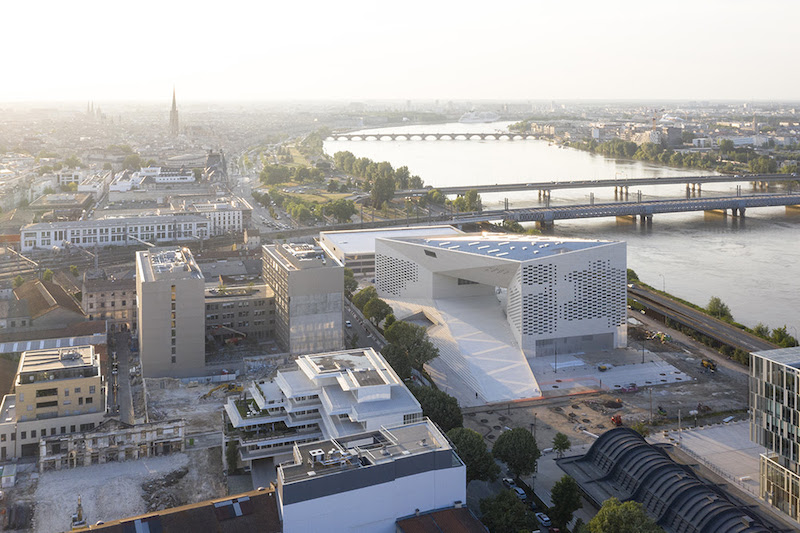
When visitors enter MÉCA from the ground floor, they will be met with a lobby where they can relax in the spiral pit or dine at Le CREM, a restaurant furnished with red furniture and cork chairs, a reference to the wine the city is known for. Near the restaurant, a giant periscope allows visitors to see the activity in the outdoor urban room and vice-versa.
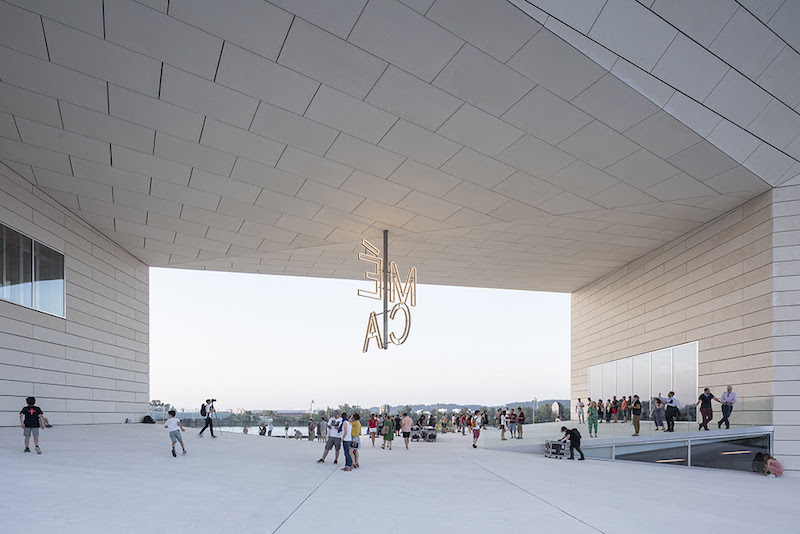
Also on the ground floor is OARA’s 250-seat theater. It features flexible seating configurations and acoustic systems optimized by an all-black checkerboard panel of concrete, wood, and perforated metal. On the second floor is an 80-seat, red-accented cinema and two production offices and project incubation areas. FRAC occupies the upper floors. These spaces include seven-meter-high exhibition spaces, production studios for artists, storage facilities, and a 90-seat auditorium and café.
Topping off the entire building is an 850-sm public roof terrace. The terrace serves as an extension of the exhibitions spaces and provides space for large-scale art installations and outdoor performances.
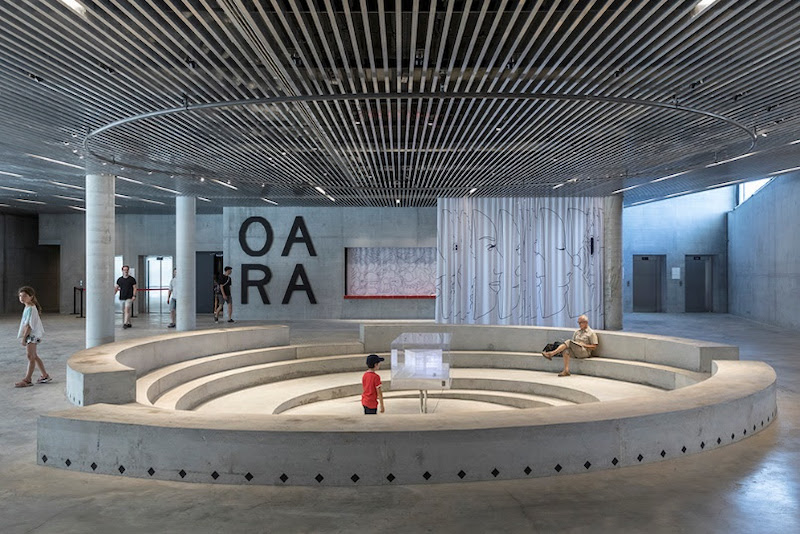
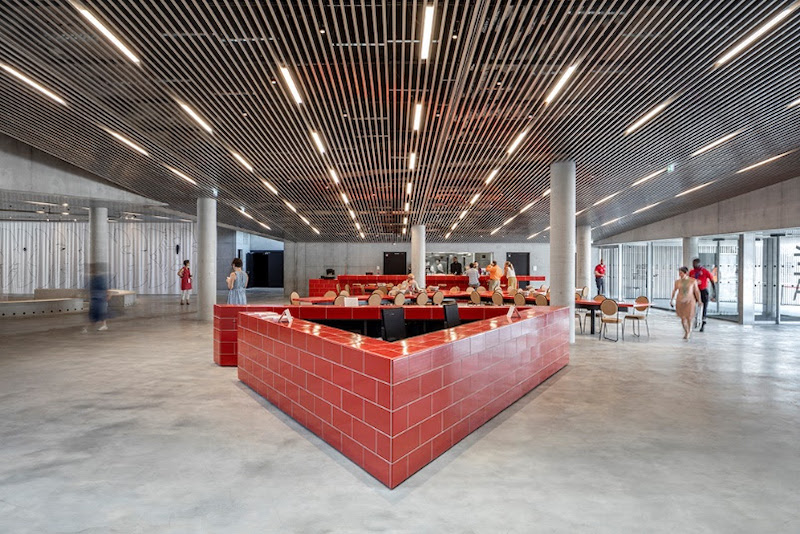
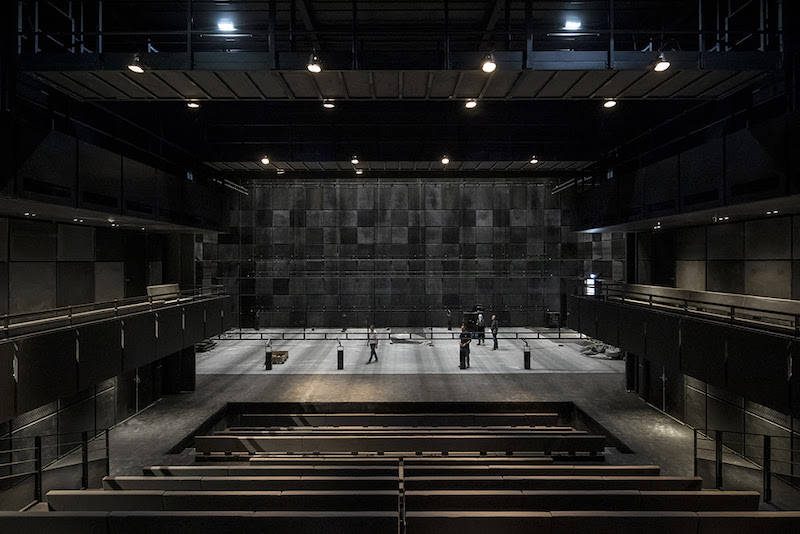
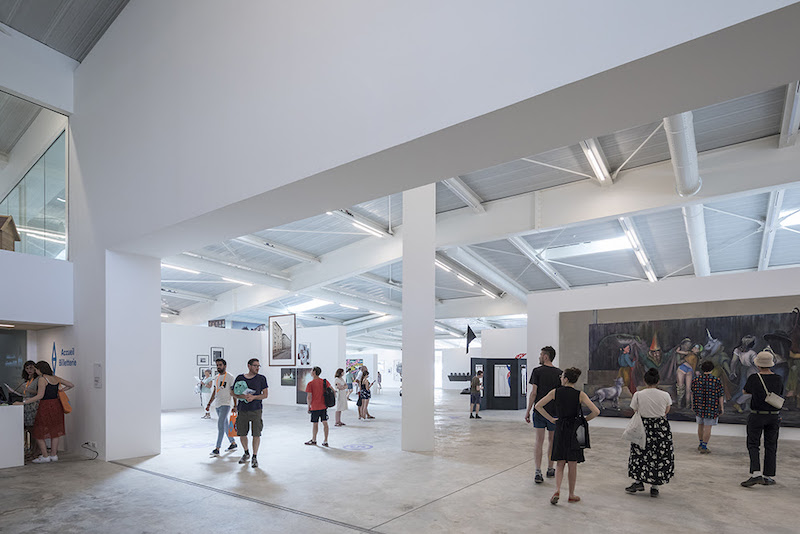
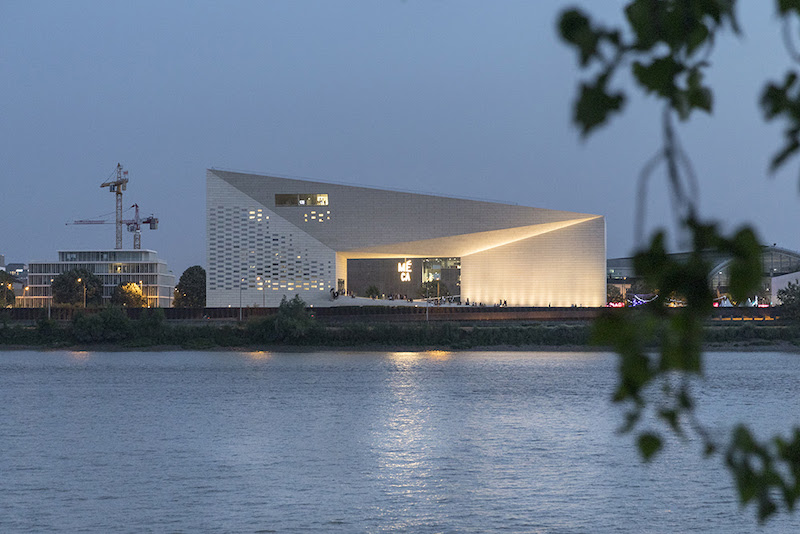
Related Stories
| Aug 11, 2010
Gold Award: Eisenhower Theater, Washington, D.C.
The Eisenhower Theater in the John F. Kennedy Center for the Performing Arts in Washington, D.C., opened in 1971. By the turn of the century, after three-plus decades of heavy use, the 1,142-seat box-within-a-box playhouse on the Potomac was starting to show its age. Poor lighting and tired, worn finishes created a gloomy atmosphere.
| Aug 11, 2010
Giants 300 University Report
University construction spending is 13% higher than a year ago—mostly for residence halls and infrastructure on public campuses—and is expected to slip less than 5% over the next two years. However, the value of starts dropped about 10% in recent months and will not return to the 2007–08 peak for about two years.
| Aug 11, 2010
Reaching For the Stars
The famed Griffith Observatory, located in the heart of the Hollywood hills, receives close to two million visitors every year and has appeared in such films as the classic “Rebel Without a Cause” and the not-so-classic “Charlie's Angels: Full Throttle.” Complete with a solar telescope and a 12-inch refracting telescope, multiple scientific exhibits, and one of the world...
| Aug 11, 2010
The Art of Reconstruction
The Old Patent Office Building in Washington, D.C., completed in 1867, houses two Smithsonian Institution museums—the National Portrait Gallery and the American Art Museum. Collections include portraits of all U.S. presidents, along with paintings, sculptures, prints, and drawings of numerous historic figures from American history, and the works of more than 7,000 American artists.
| Aug 11, 2010
Silver Award: Pere Marquette Depot Bay City, Mich.
For 38 years, the Pere Marquette Depot sat boarded up, broken down, and fire damaged. The Prairie-style building, with its distinctive orange iron-brick walls, was once the elegant Bay City, Mich., train station. The facility, which opened in 1904, served the Flint and Pere Marquette Railroad Company when the area was the epicenter of lumber processing for the shipbuilding and kit homebuilding ...
| Aug 11, 2010
Bowing to Tradition
As the home to Harvard's Hasty Pudding Theatricals—the oldest theatrical company in the nation—12 Holyoke Street had its share of opening nights. In April 2002, however, the Faculty of Arts and Sciences decided the 1888 Georgian Revival building no longer met the needs of the company and hired Boston-based architect Leers Weinzapfel Associates to design a more contemporary facility.
| Aug 11, 2010
Silver Award: Please Touch Museum at Memorial Hall Philadelphia, Pa.
Built in 1875 to serve as the art gallery for the Centennial International Exhibition in Fairmount Park, Memorial Hall stands as one of the great civic structures in Philadelphia. The neoclassical building, designed by Fairmount Park Commission engineer Hermann J. Schwarzmann, was one of the first buildings in America to be designed according to the principles of the Beaux Arts movement.
| Aug 11, 2010
Financial Wizardry Builds a Community
At 69 square miles, Vineland is New Jersey's largest city, at least in geographic area, and it has a rich history. It was established in 1861 as a planned community (well before there were such things) by the utopian Charles Landis. It was in Vineland that Dr. Thomas Welch found a way to preserve grape juice without fermenting it, creating a wine substitute for church use (the town was dry).
| Aug 11, 2010
Team Tames Impossible Site
Rensselaer Polytechnic Institute, the nation's oldest technology university, has long prided itself on its state-of-the-art design and engineering curriculum. Several years ago, to call attention to its equally estimable media and performing arts programs, RPI commissioned British architect Sir Nicholas Grimshaw to design the Curtis R.
| Aug 11, 2010
Silver Award: Hanna Theatre, Cleveland, Ohio
Between February 1921 and November 1922 five theaters opened along a short stretch of Euclid Avenue in downtown Cleveland, all of them presenting silent movies, legitimate theater, and vaudeville. During the Great Depression, several of the theaters in the unofficial “Playhouse Square” converted to movie theaters, but they all fell into a death spiral after World War II.


